


|
|
|
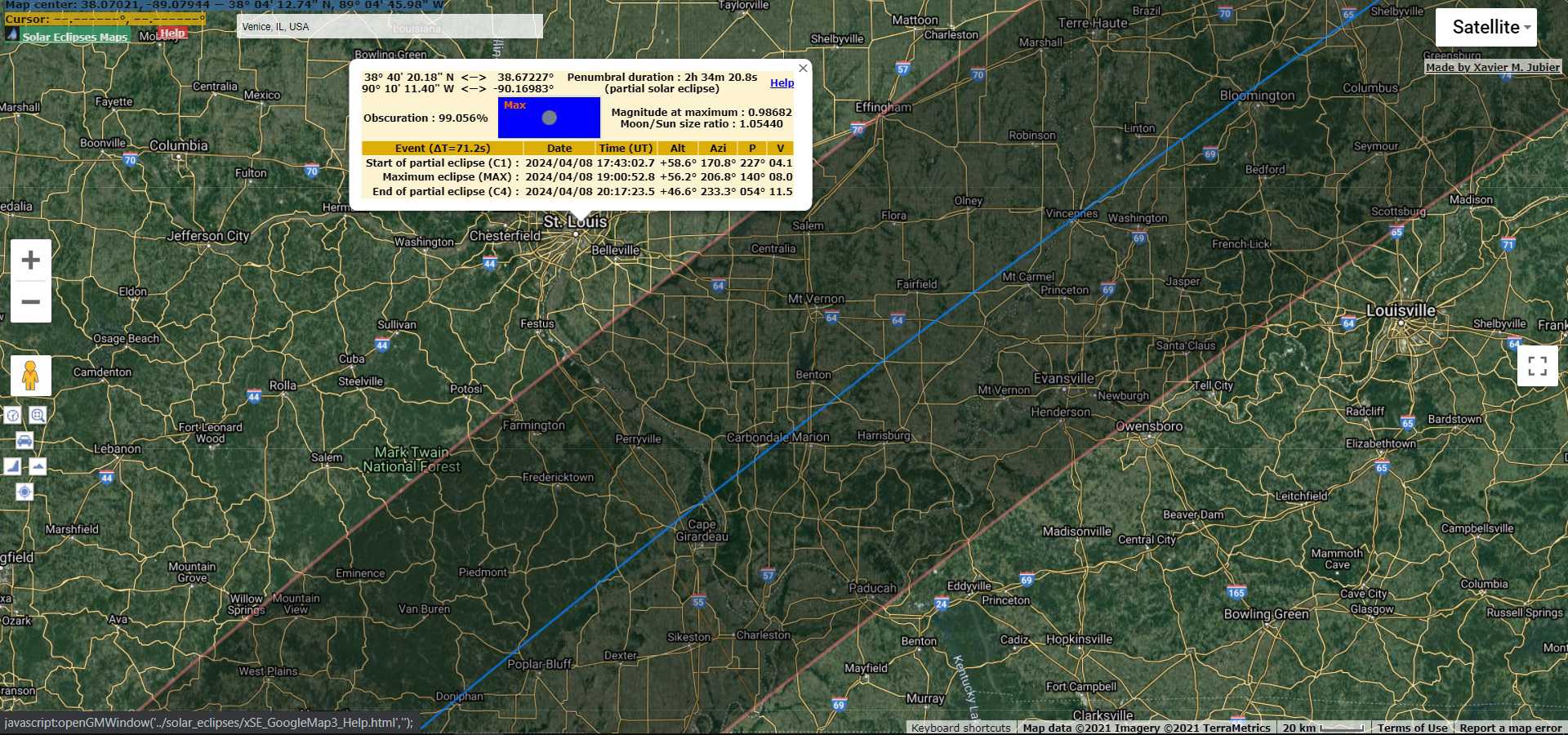 Click photo for larger image. YOU WILL NOT SEE TOTALITY FROM VENICE as just 99% of the sun will be covered. The difference between 99% and seeing a total solar eclipse is similar to the difference of seeing your favorite singer on stage from front row center and watching one of their music videos on a smartphone from across a large room. "If you're not in the moon's shadow, you're missing the show," the old saying goes. You don't have to drive far to see totality if you live in the St. Louis metropolitan area, but you do have to drive to "SEE THE SHOW." The closer to the blue line, the longer you see totality. Up to four minutes and nine seconds of totality can be experienced without much effort and it's a once in a lifetime experience you'll never forget. Carlyle, Red Bud and some of Effingham are in the shadow, but totality will only last for seconds. Grab a sandwich while you wait; a fast-food parking lot will work just fine. Just don't be late. Totality begins just before 2 p.m. CDT   Click HERE for more information on eye protection |
|
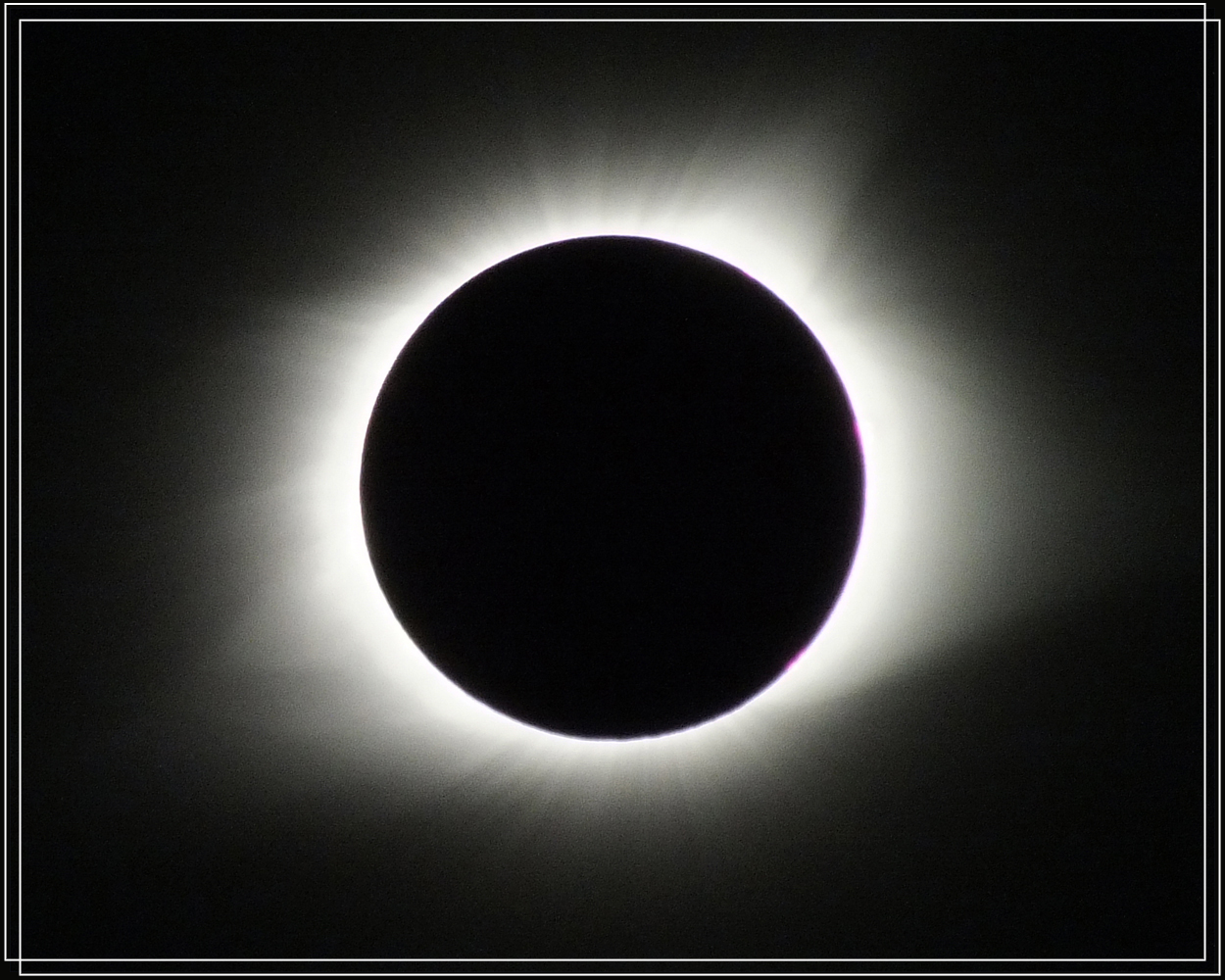 My photo of the Great American Eclipse - August 21, 2017 |
|
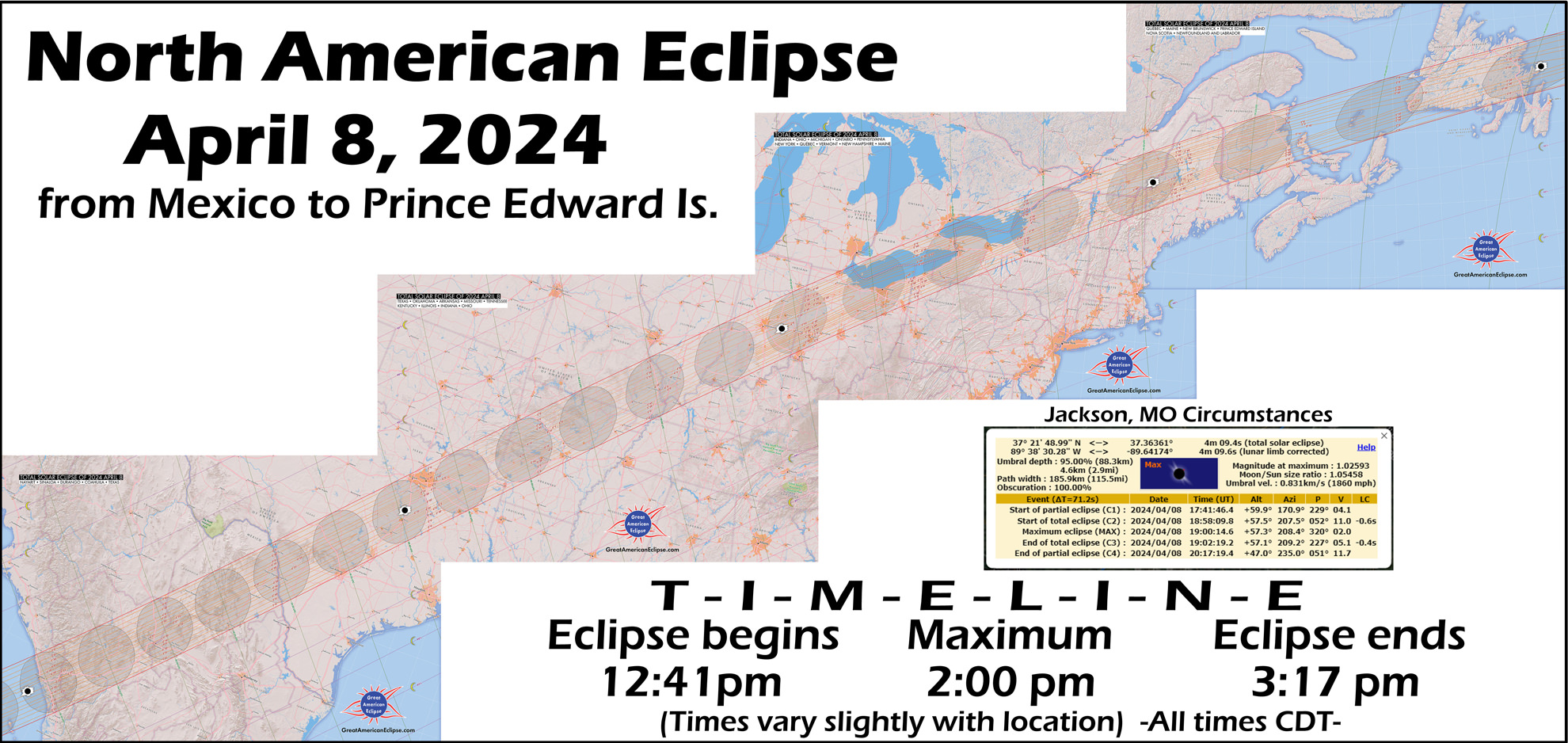 Click on any graphic for a larger version |
|
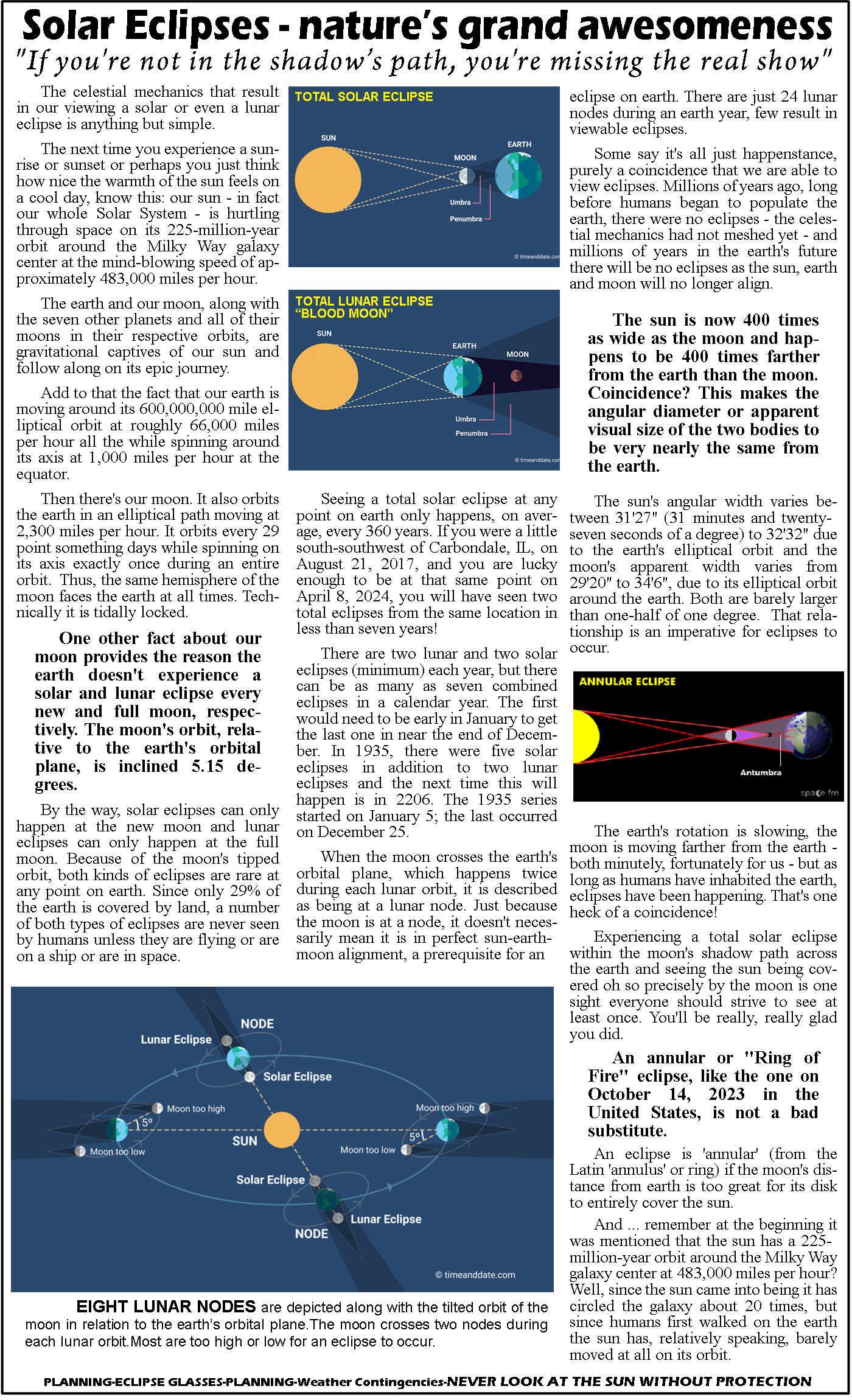 |
|
|
A few links for further info The best website for eclipses: Xavier M. Jubier The best interactive map: Interactive google map A less technical website for the 2024 eclipse: Nationaleclipse.com How to read the "Solar Eclipse Circumstances" Chart: "Solar Eclipse Circumstances" A comprehensive website on all eclipses: moonblink.info Eclipse 2024: eclipse2024.org/ Everything about eclipses: eclipsophile.com The gospel on space weather spaceweather.com Everything on average April 8 weather in STL region STL regional weather An indespensable resource: timeanddate.com For safe viewing: Eclipse glasses |
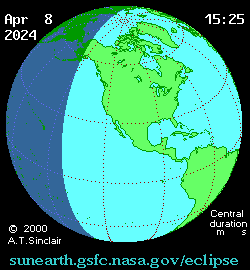
|

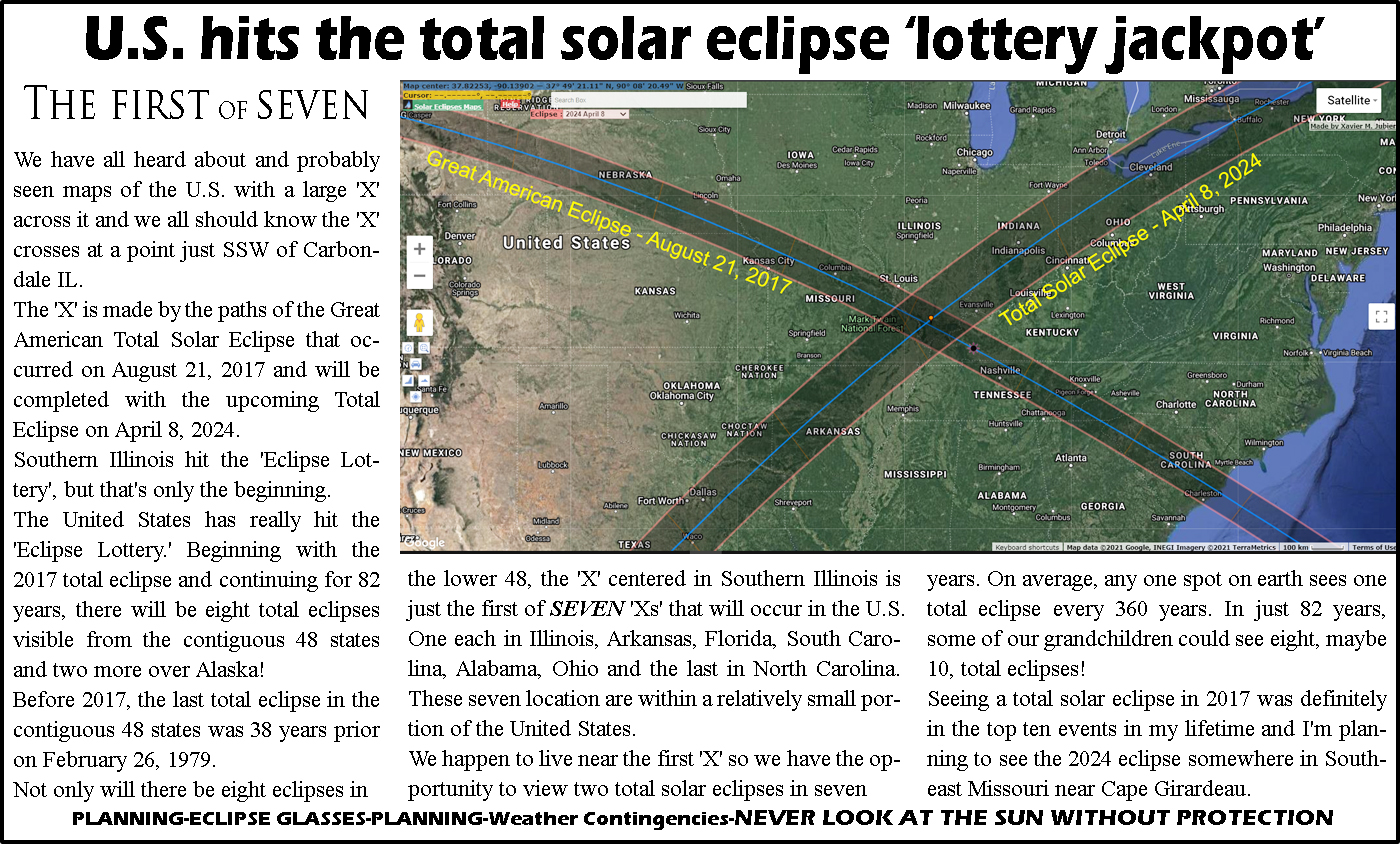
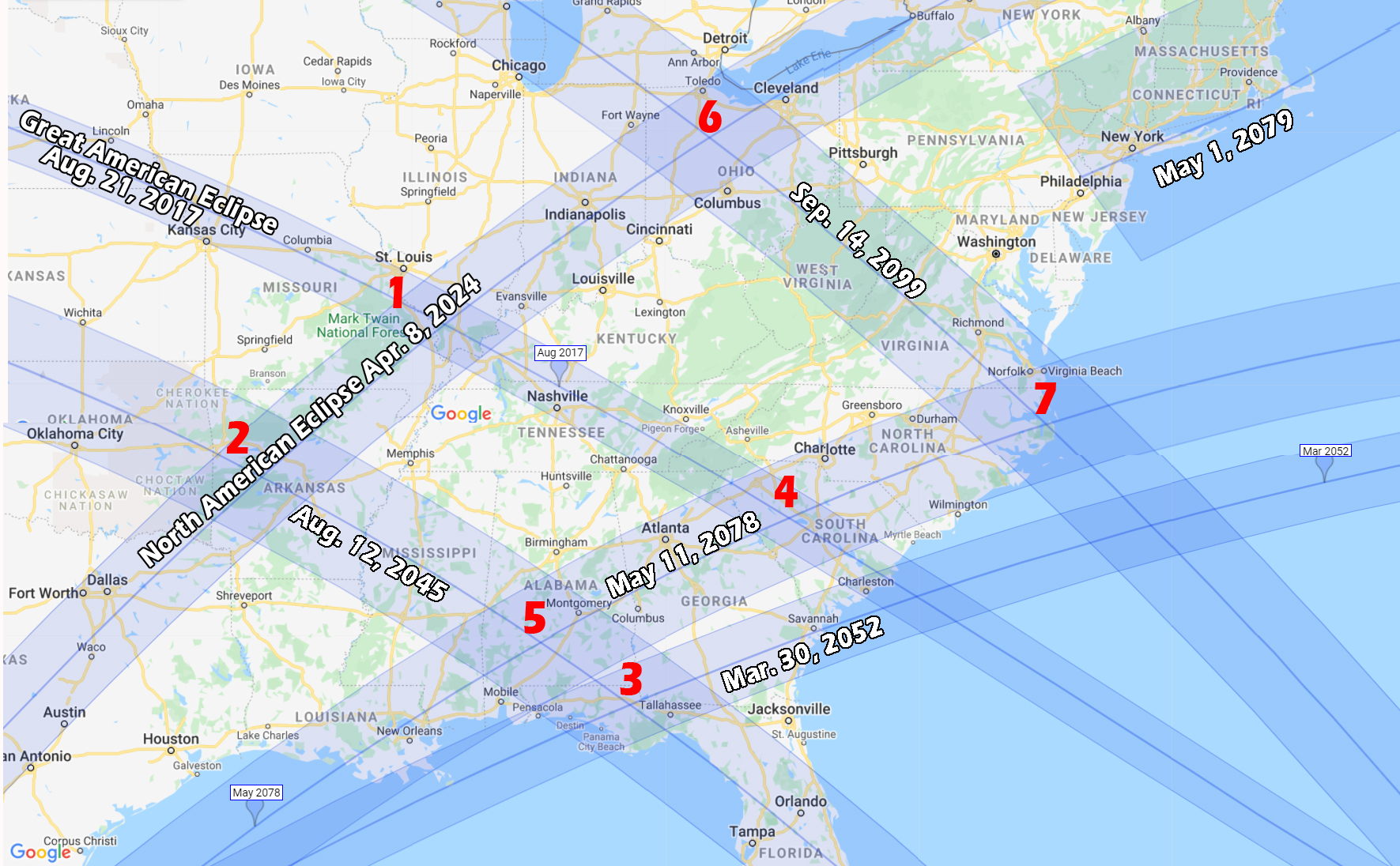

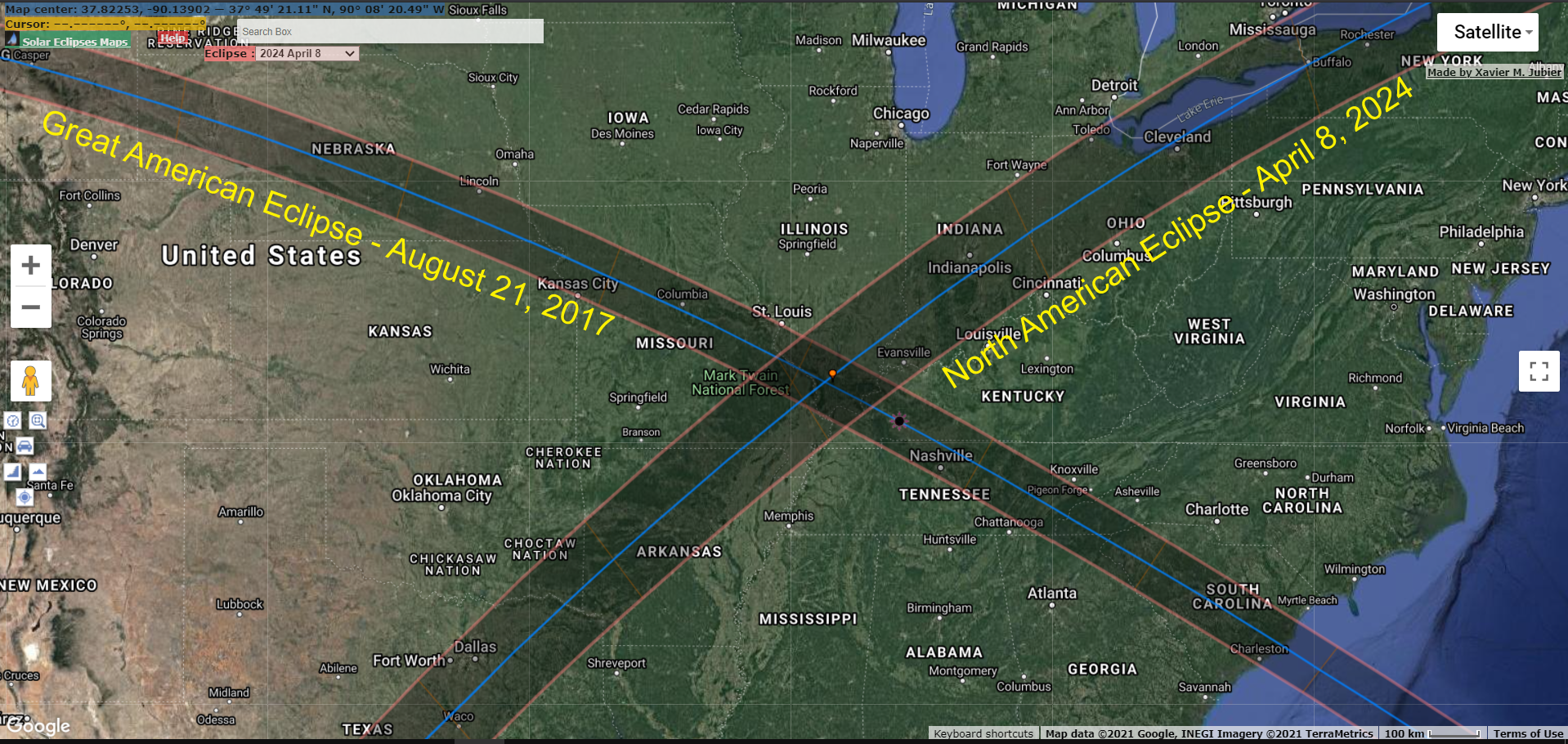
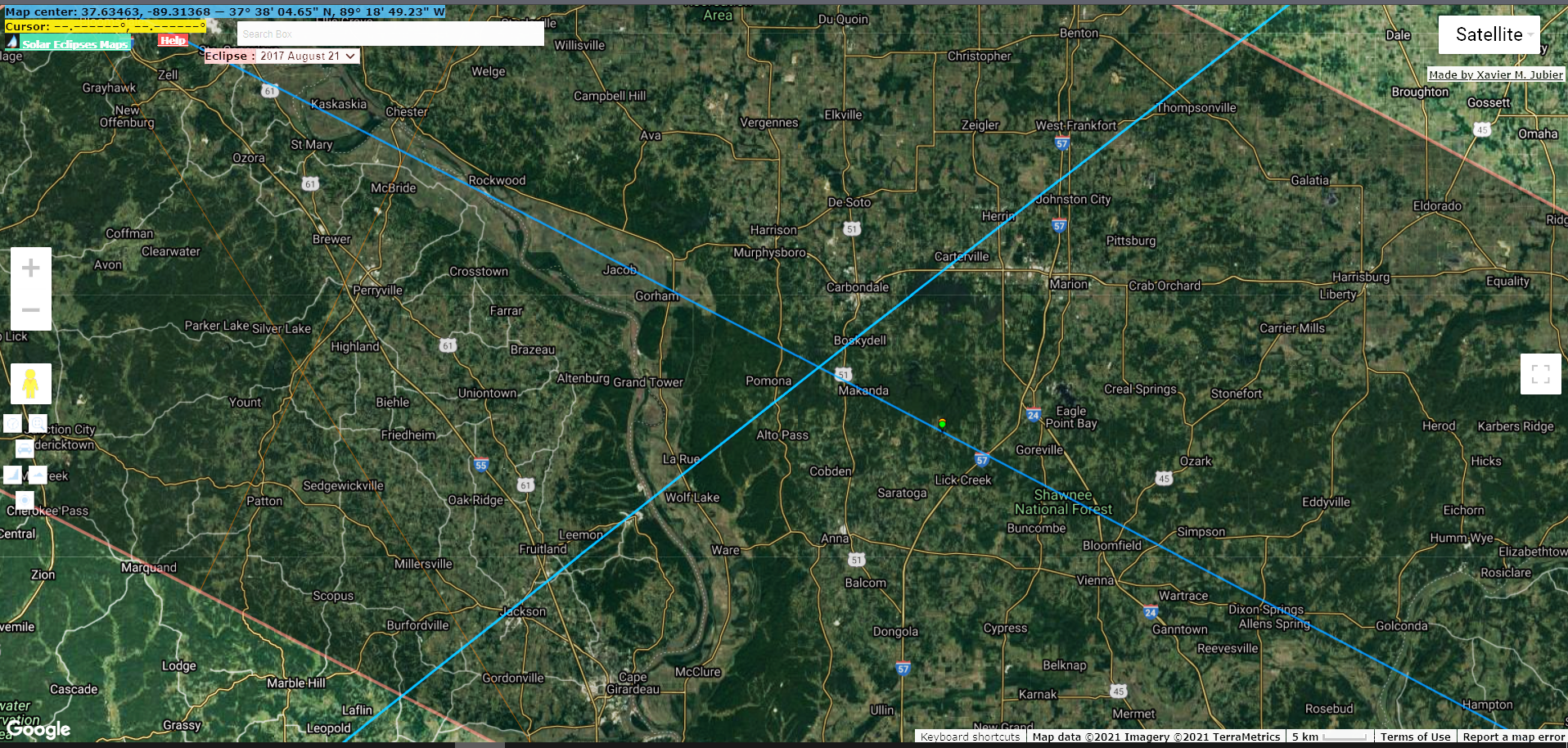
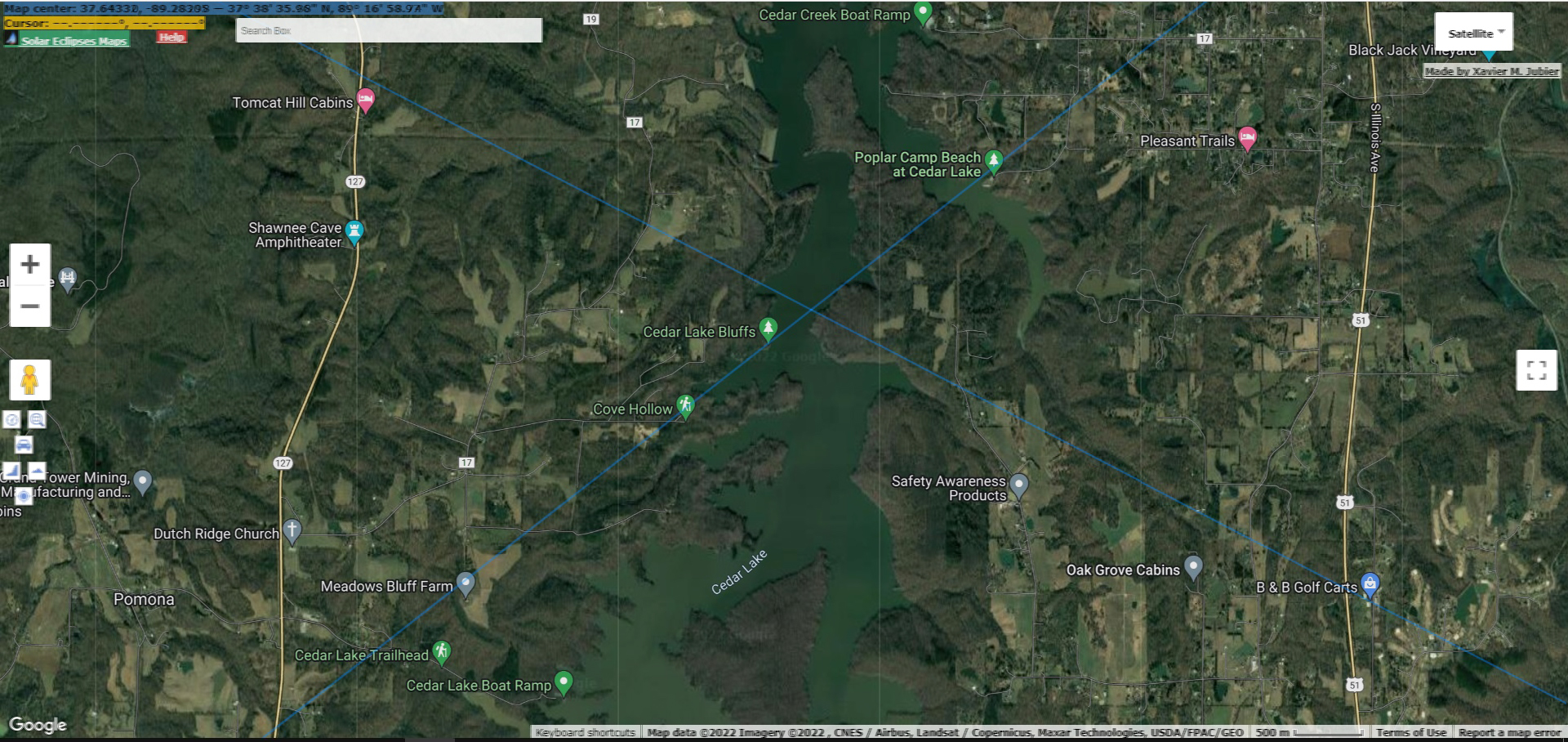
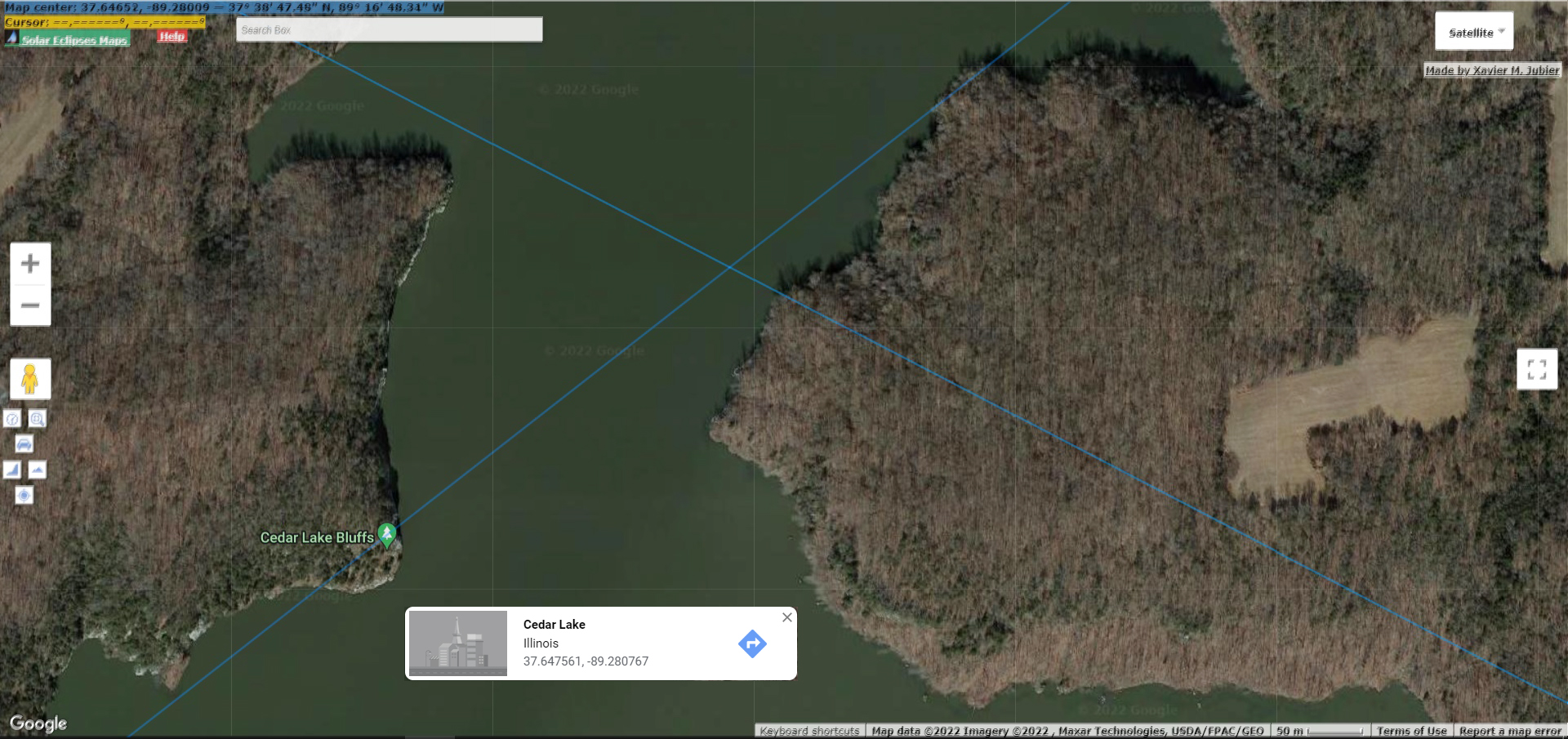
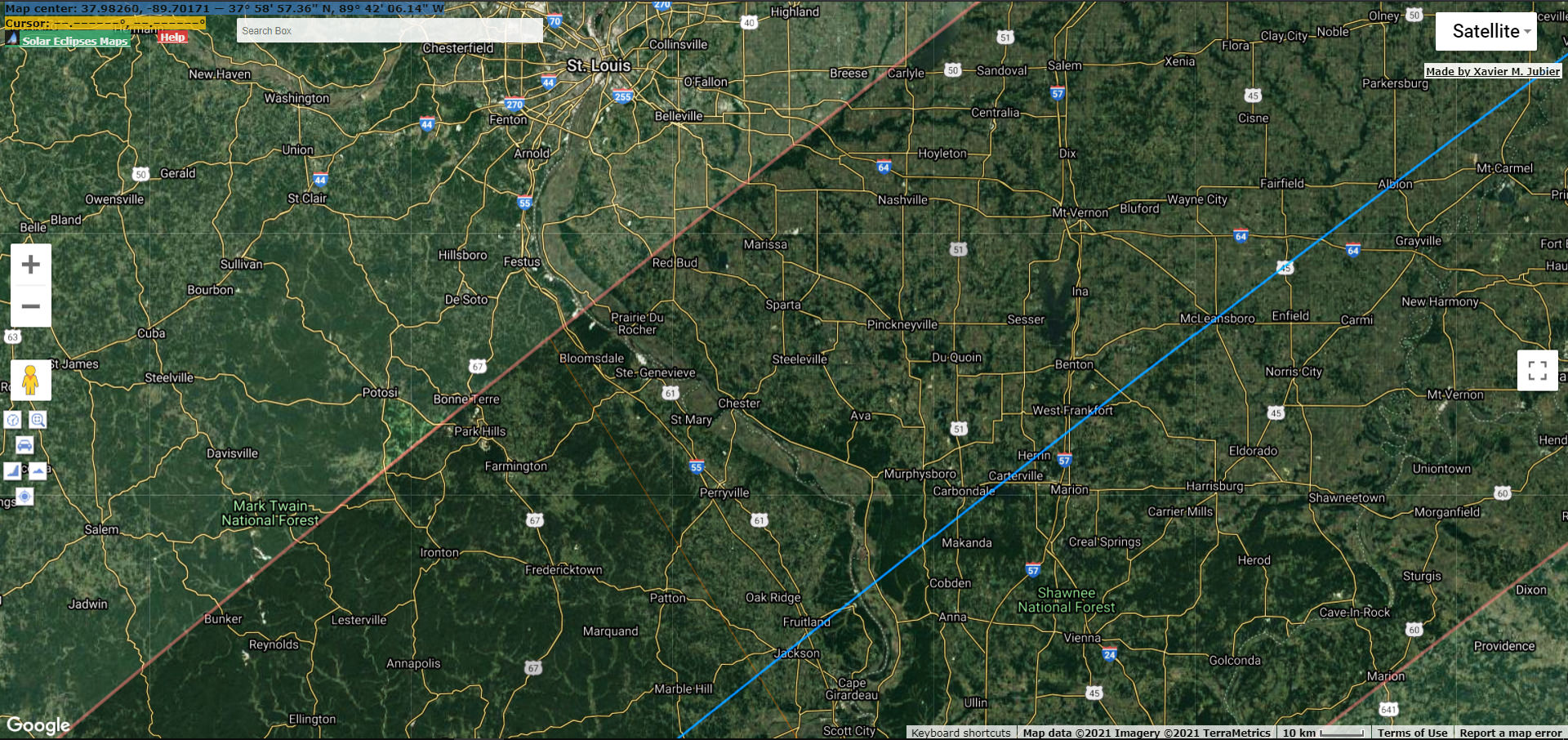
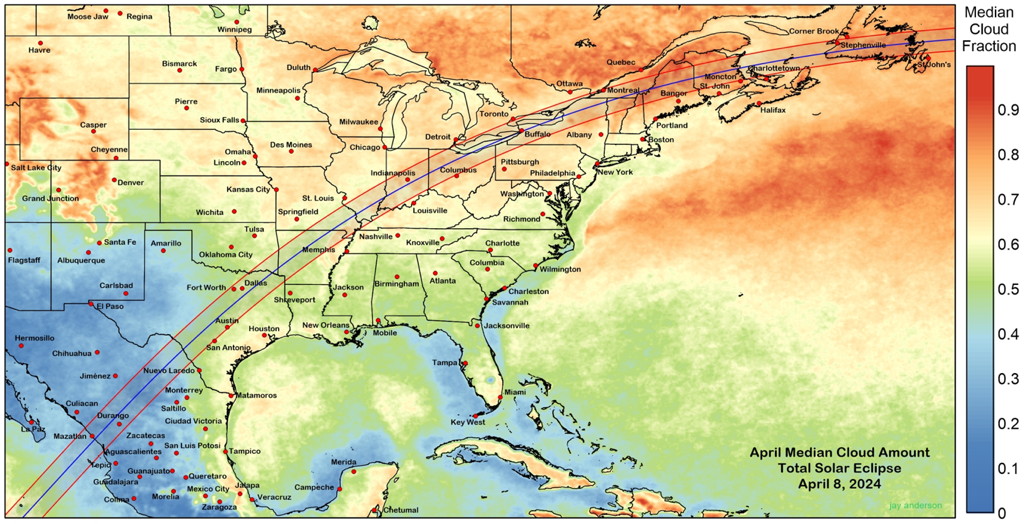
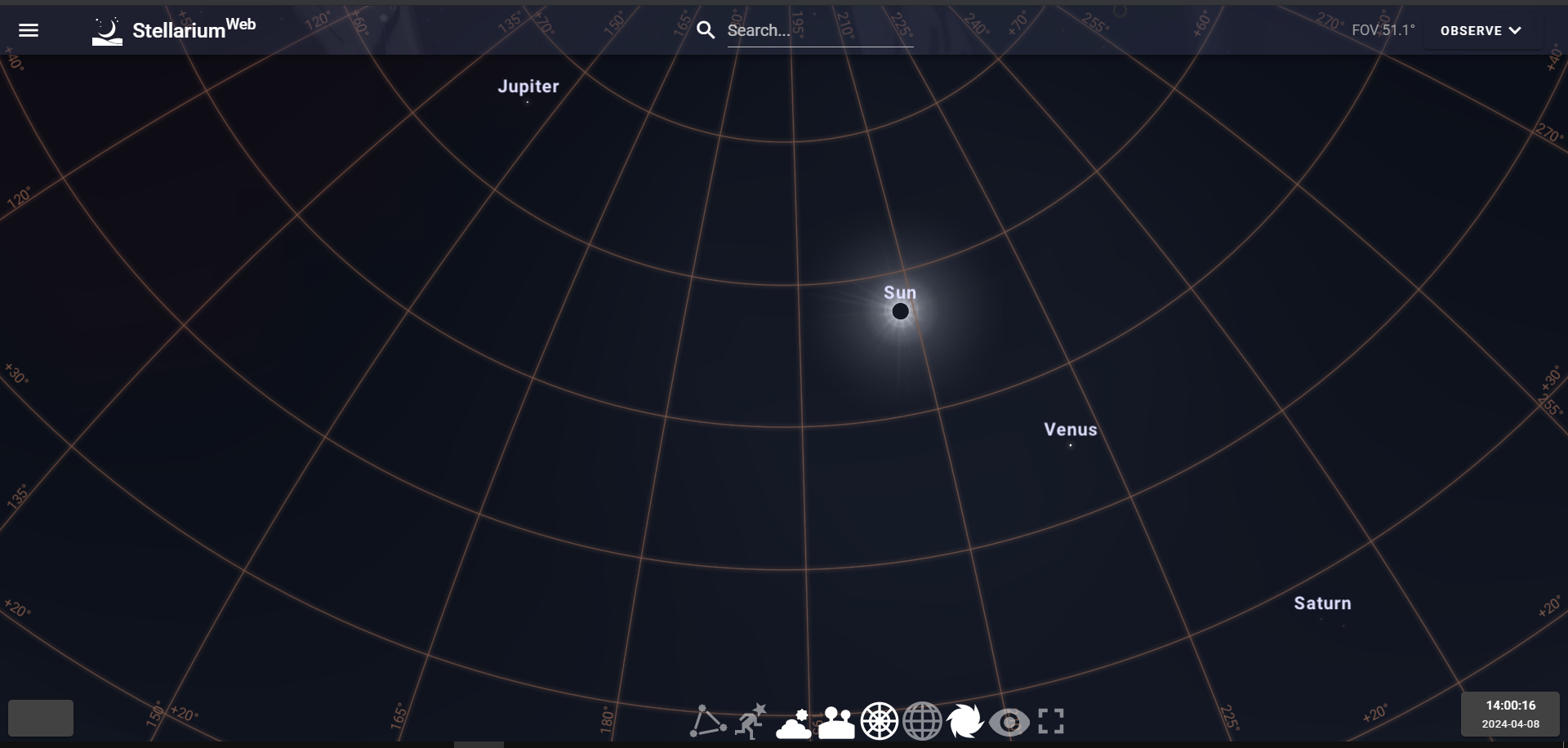
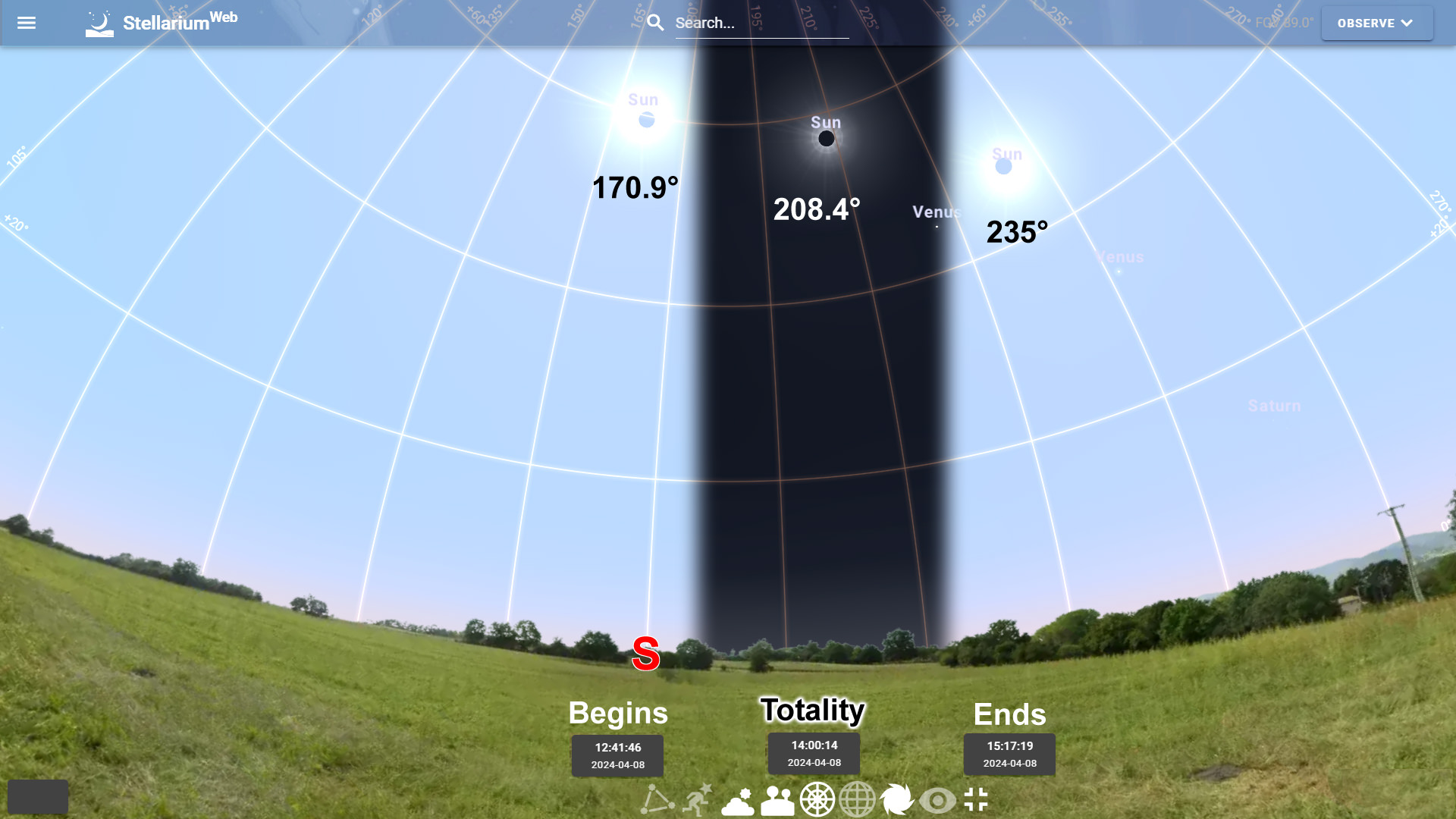

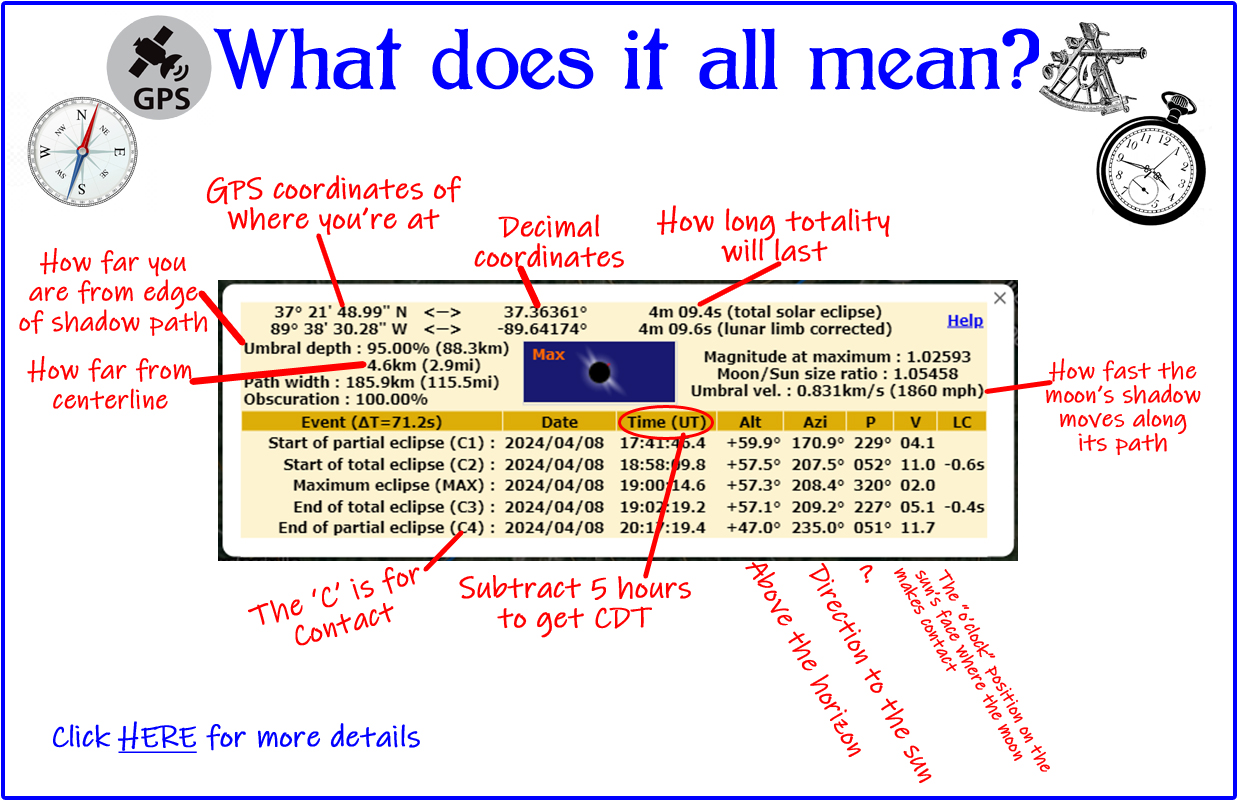
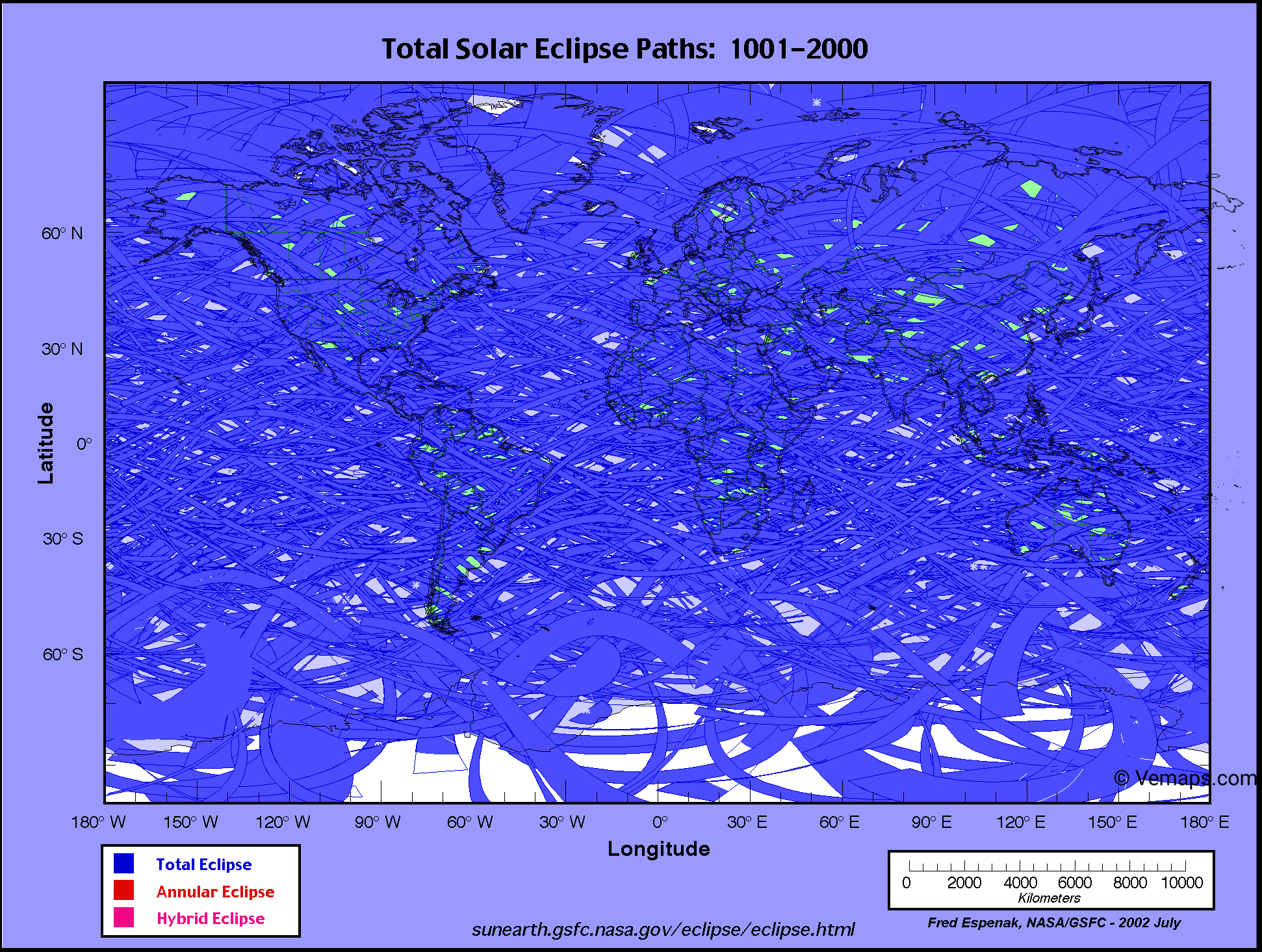
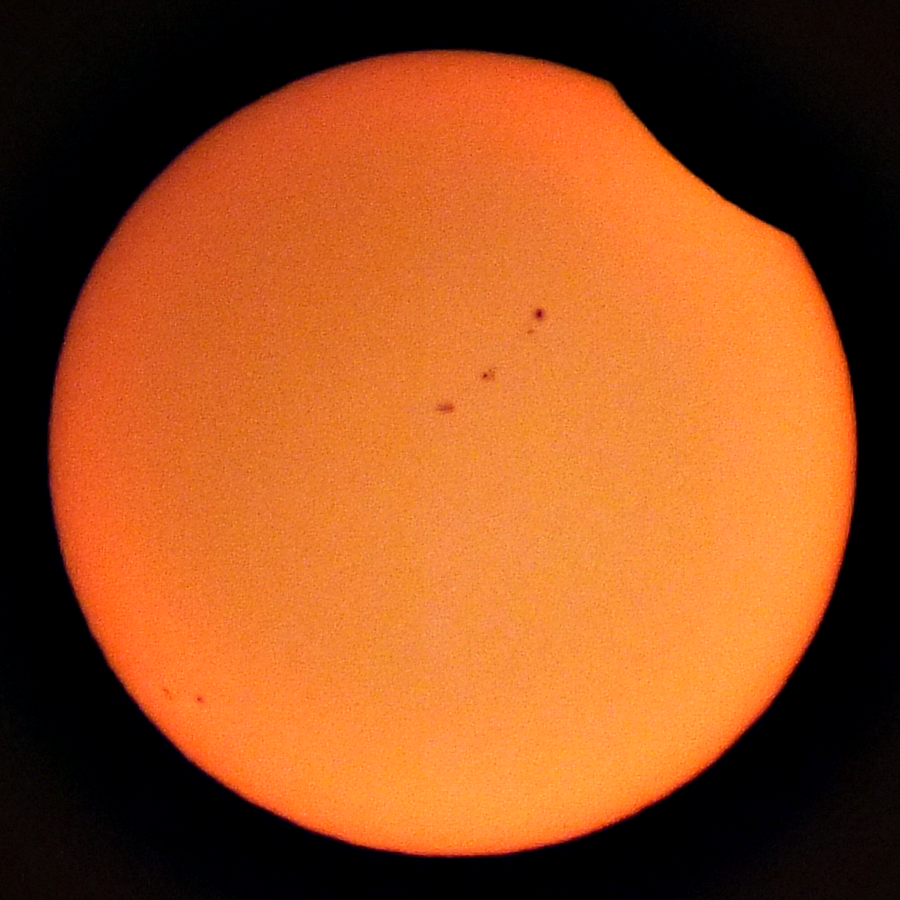
(Photo by Patrick Foley) Place your cursor over the photo for arrows pointing out the six sunspots visible at the start of the 2017 Great American Eclipse, 11:09 a.m. to be exact, as seen from Festus, MO. By April of 2024, we will be experiencing significant sunspot activity as July 2025 is predicted to be the time of maximum sunspots. More than 100 sunspots could be seen at one time during the maximum period of the 11-year sunspot cycle. We are currently moving out of a minimum sunspot period that bottomed out in late 2019 and early 2020 with 77% of the days having no sunspots. 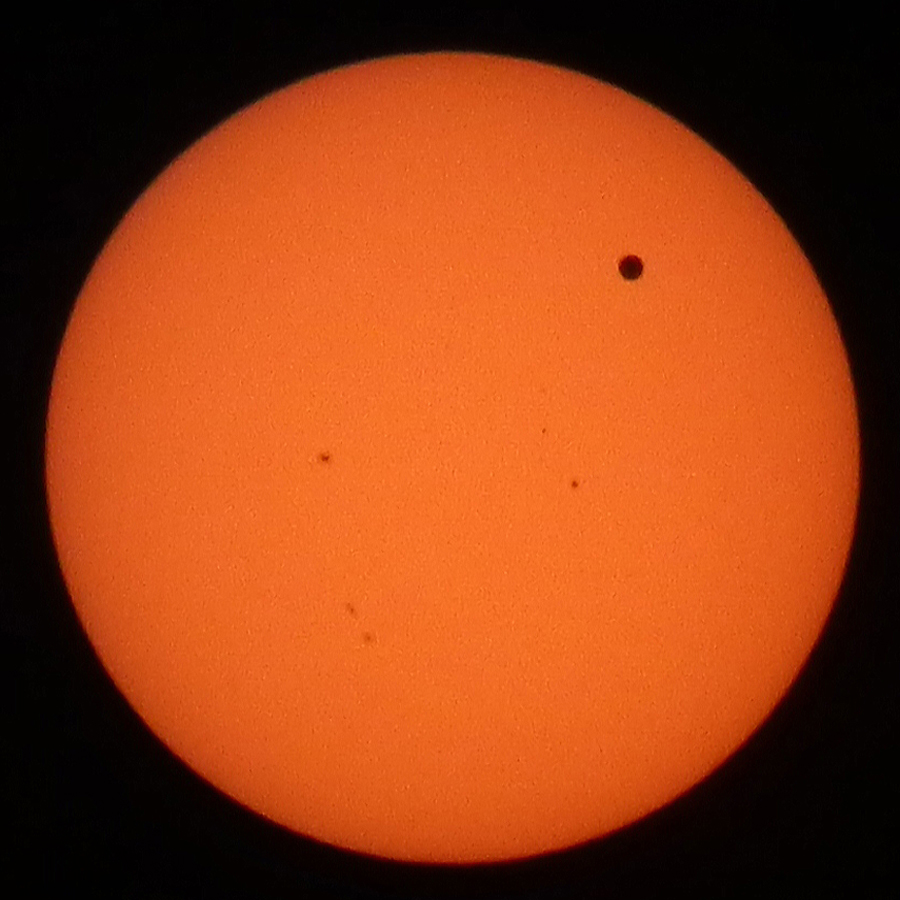
(Photo by Patrick Foley) A smattering of small sunspots are overshadowed by the planet Venus (at the 1:30 o'clock position) as it transits across the face of the sun on June 5, 2012. Transits are rare and only possible by Venus and Mercury as both are within the orbit of the Earth. The next Mercury transit will be in 2032, but U.S. watchers have to wait until 2049. Venus transit watchers will have to wait until 2117! |
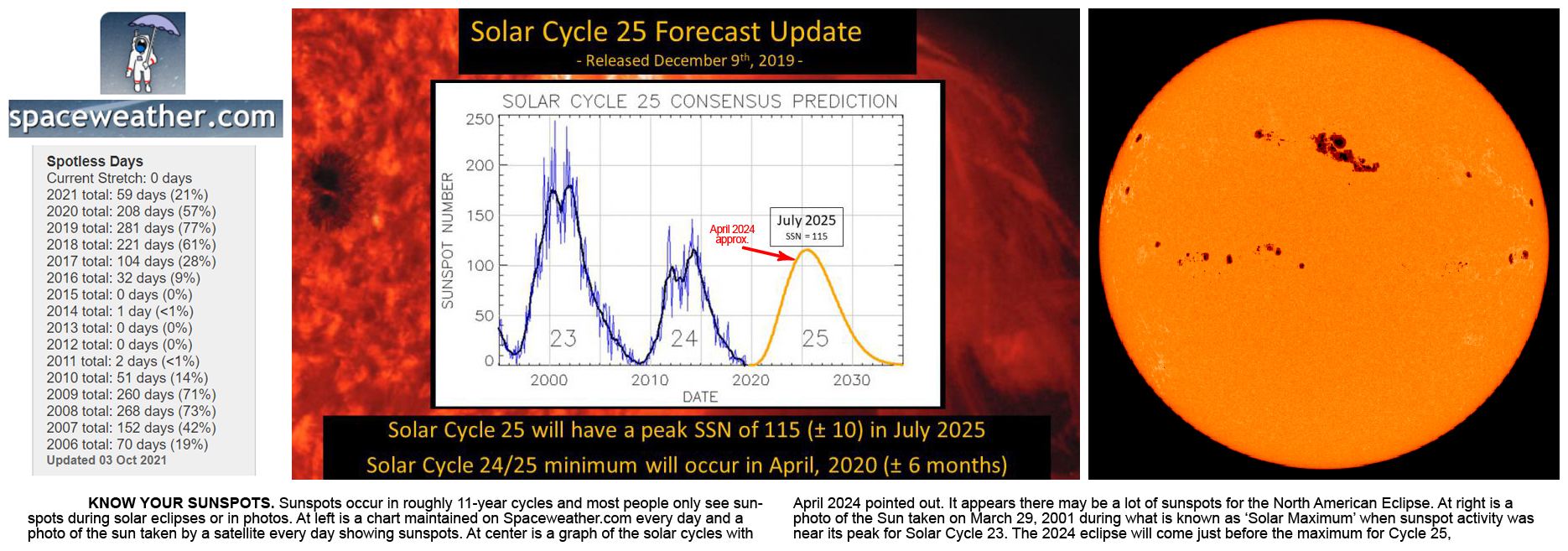
|
For educational purposes only |